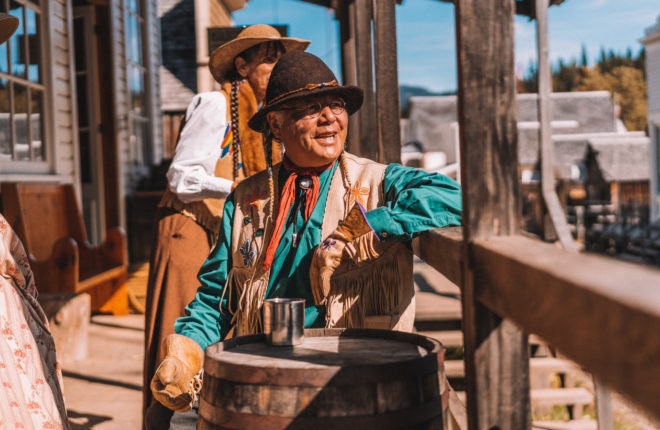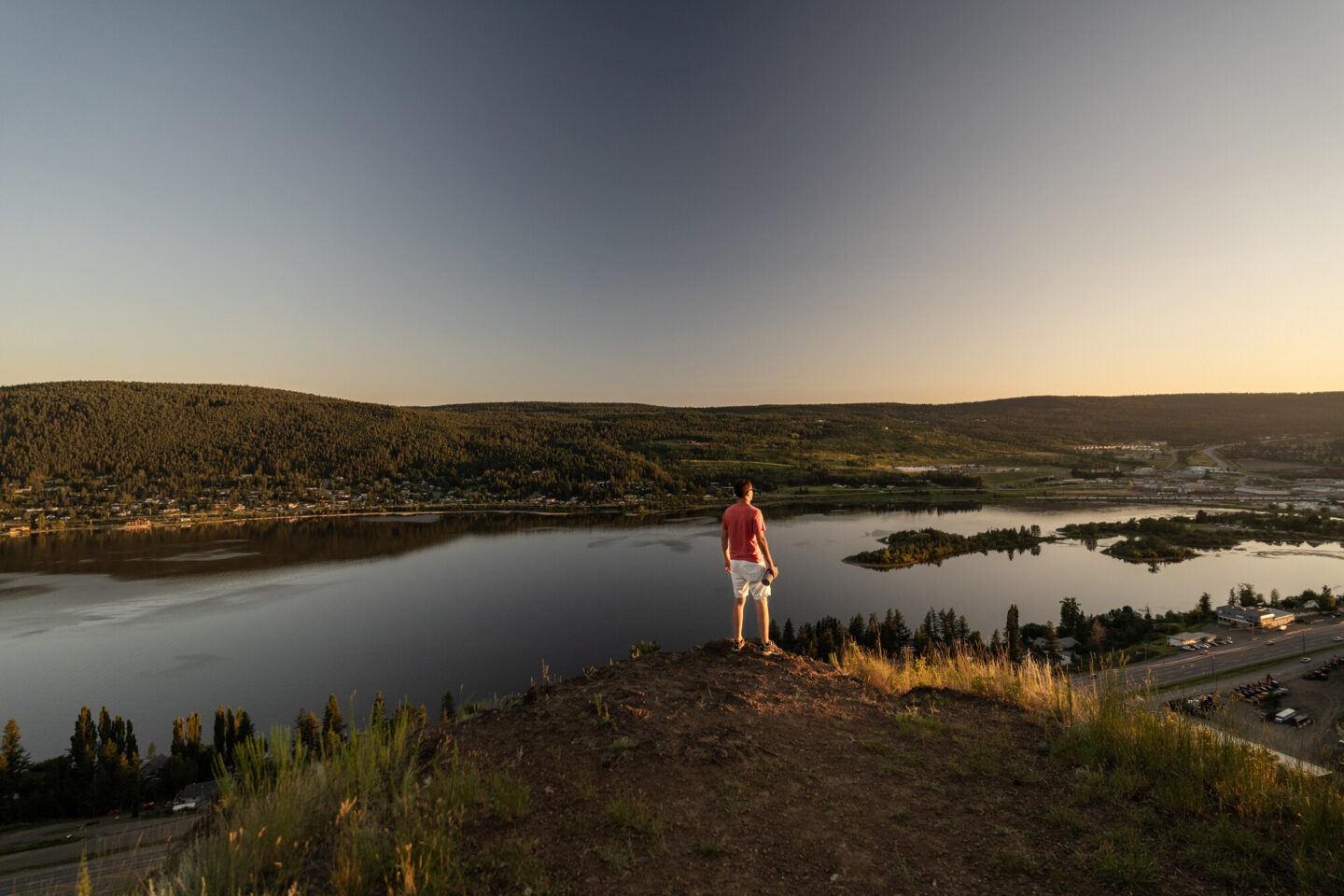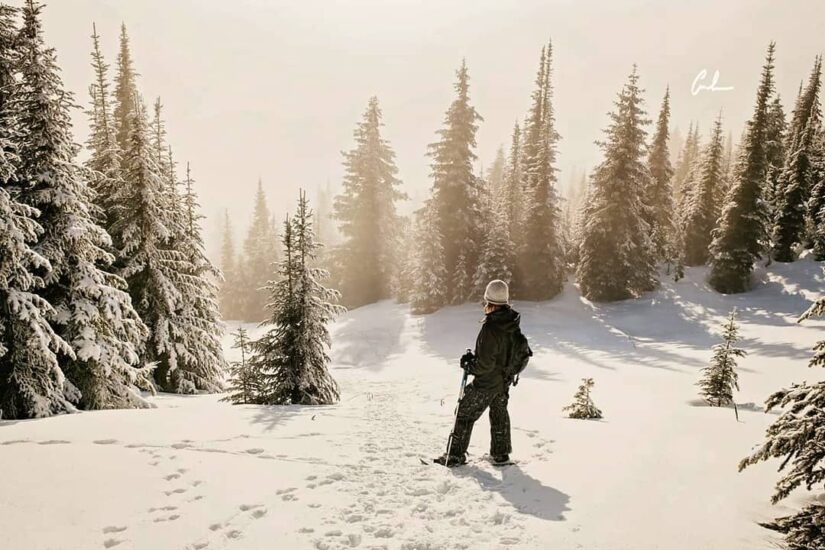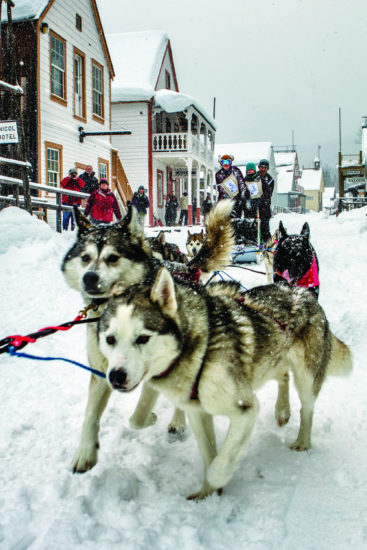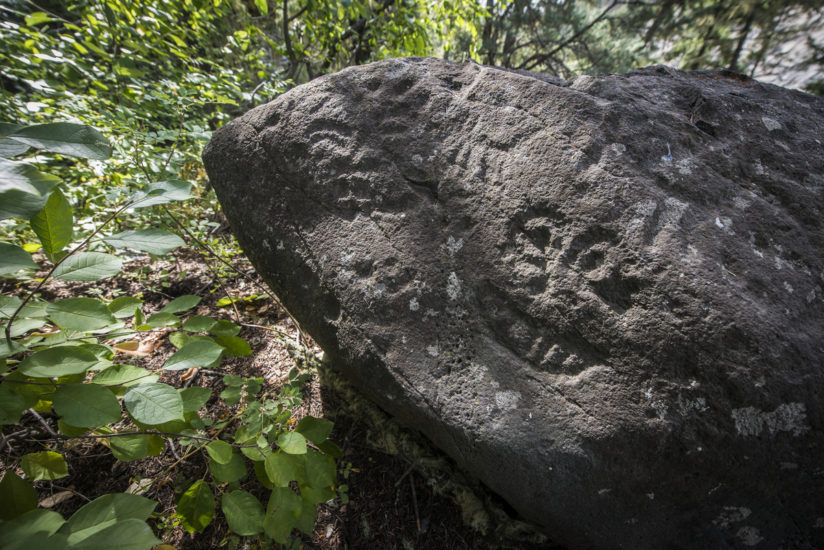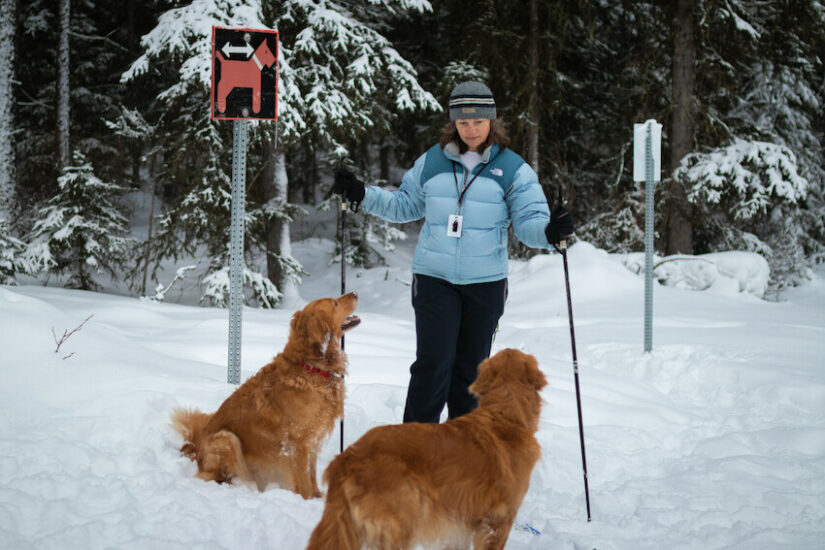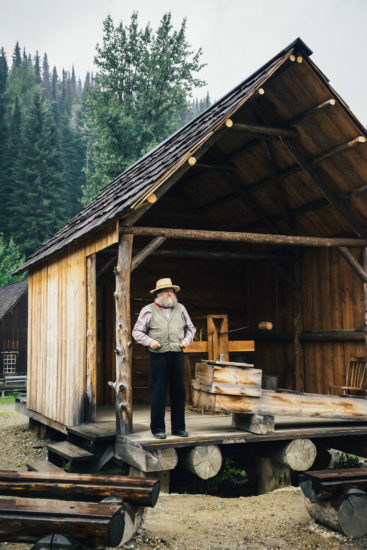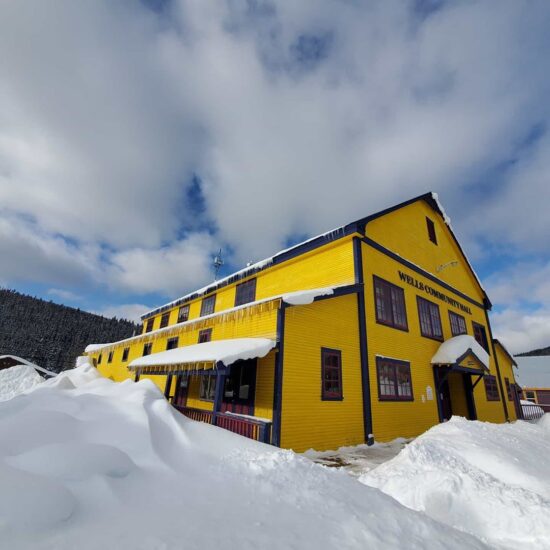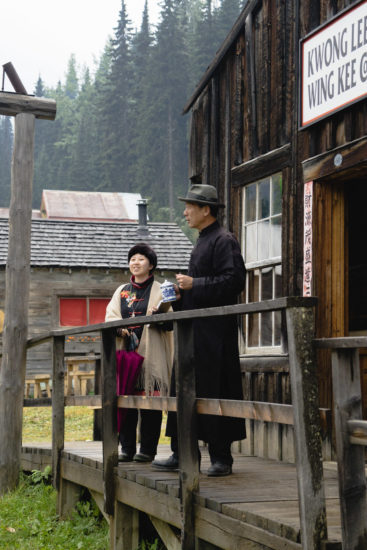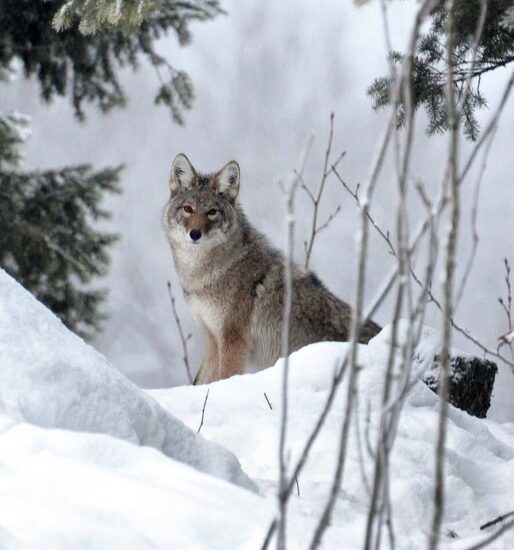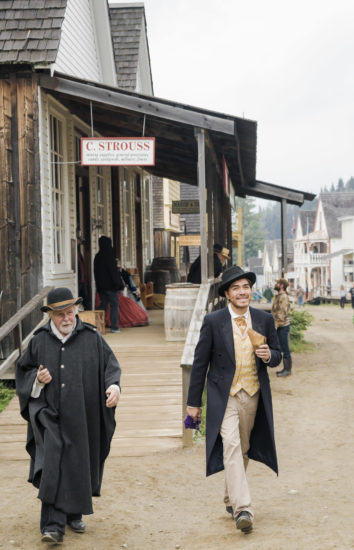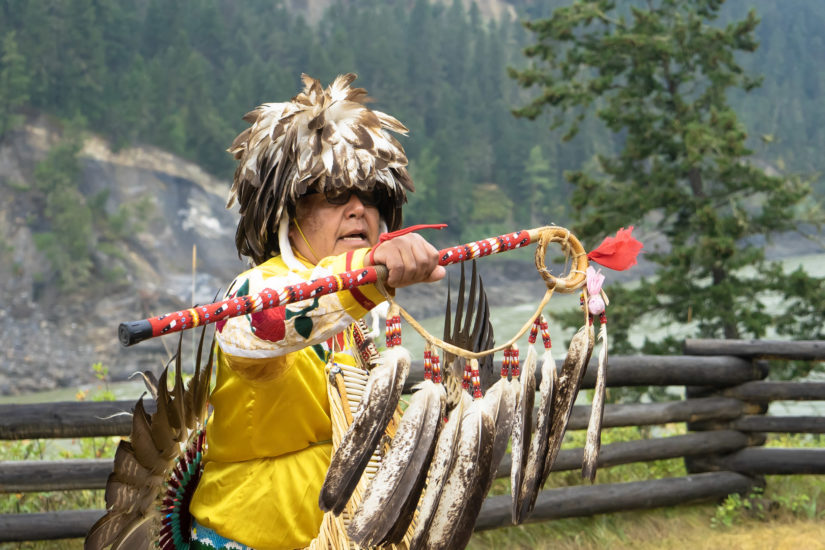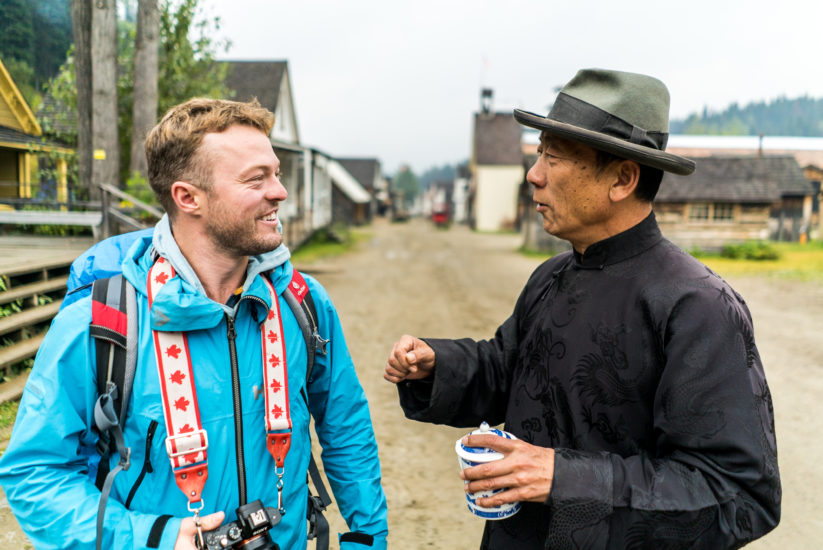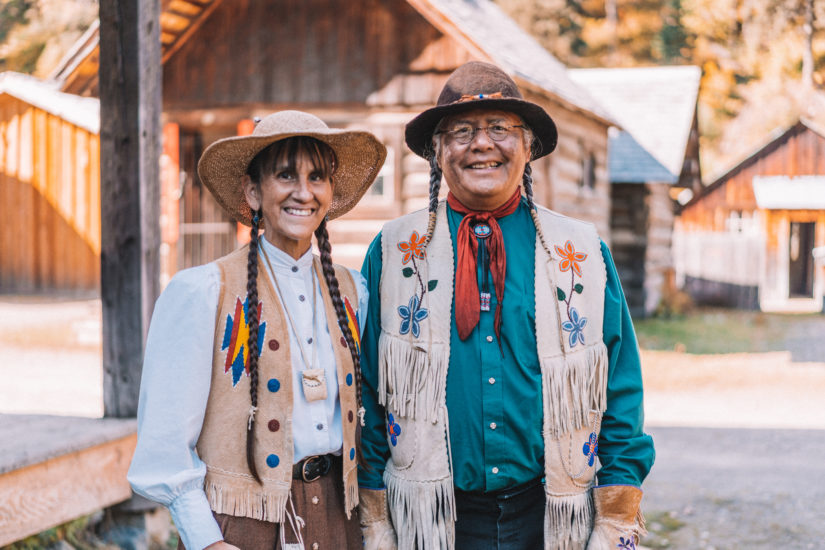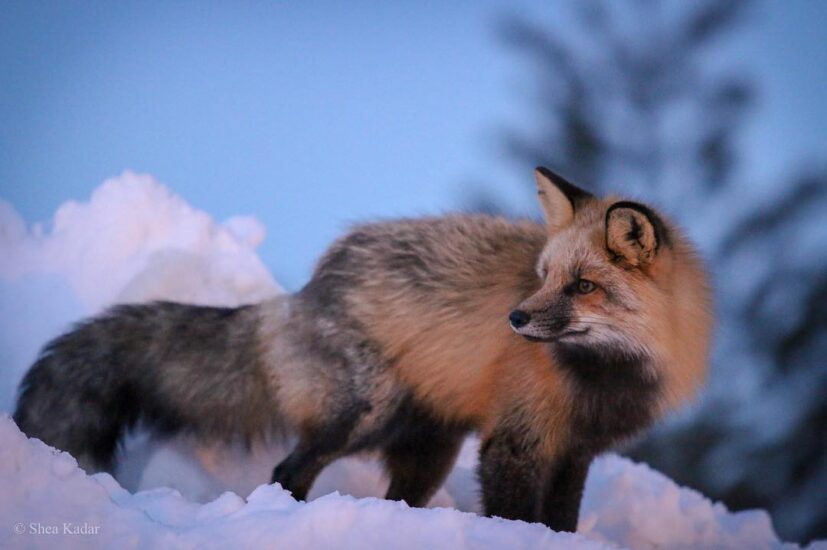Travel Info
- Distance
- ~ 220 km / 137 miles Highway 97 and Highway 26
- Suggested Trip Time
- 1-4 days
STOPS ON THIS LEG OF THE GOLD RUSH TRAIL
Billy Barker’s legendary gold strike on Williams Creek triggered a multi-billion dollar industrial revolution
By 1860, the mines of the lower Fraser were pretty much played out and gold had been found north in the creeks that emptied into Quesnel Lake. Billy Barker’s legendary gold strike on Williams Creek triggered a multi-billion dollar industrial revolution that literally built a province. Due to this strike, the “Cariboo Waggon Road” became the major route to the interior of the province. Building the Cariboo Waggon road from Clinton through to Soda Creek was much easier than completing the route through the Fraser Canyon. The road largely followed the original Fur Brigade trail already used to reach Quesnelle Forks, however when the waggon road reached 150 Mile House instead of turning northwest for Williams Lake it turned northeast for Deep Creek ( later known as 158 Mile House) curving down to Soda Creek where there were sternwheelers waiting to take the miners to Quesnel where they would walk on foot or take the BX stagecoach to Barkerville. In 1865, the Cariboo Waggon road carving through the Cariboo Mountains to the goldfields of Barkerville was completed and would only be used for a few more years as the main travelling route for the flood of people following the gold rush. With paddle-wheelers plying the Fraser River and interior lakes, and a major railway to come, the region’s newly settled farmers and ranchers stayed on, and the Cariboo Wagon road continued to be traveled by miners, adventurers, freight wagons and the BX stage for many more decades after its completion.
In the mid-1930s as the gloom of the Great Depression swept across North America, a prospector named Fred Wells had a hunch that there might still be gold in the Cariboo Mountains. He was right and people flocked to the area, and Fred Well’s Cariboo Gold Quartz Mining Company built a town at the site of its mine and named it Wells. Today, the historic and vibrant town of Wells is a wonderful community to visit and the neighbouring historic town of Barkerville stands as a living testament to BC’s golden beginnings. The Cariboo Waggon road and the Cariboo Gold Rush opened up the Interior of British Columbia and still today as you travel Highway 97 and Highway 20 you will roughly follow the iconic Cariboo Waggon Road.
Geographically, the Cariboo is located in central British Columbia, nestled on the Fraser Plateau between the heights of the Coastal and Rocky mountain ranges and at the foothills of the Cariboo Mountains. The Fraser River cuts through the middle of this rolling plateau, dividing the Cariboo from the wilds of the Chilcotin. The Cariboo is a popular destination for guest ranches and fishing vacations, heritage sites, indigenous experiences as well as multi-day paddles on the Bowron Lake or Turner Lake canoe circuits. Others prefer to hit the open road by car or RV, stopping along the way at the many points of interest, festivals and cultural and heritage sites. From the shores of Williams lake, surrounded by rolling hills of sagebrush, fir and pine trees to the Fraser River to the gateway to the Cariboo Mountains in Wells and Barkerville this road trip will not let you down.
150 Mile House is a quiet ranchland community known for its gold rush, and pioneer history and log homes. The Cariboo Waggon Road was in fact scheduled to run through Williams Lake; however, a funding dispute resulted in a detour that went from 150 Mile House to Soda Creek. From 150 Mile House, travellers generally decide whether to continue north to Williams Lake or head northeast along the Gold Rush Trail to the resort lakes around Horsefly and Likely, or the “Backroad to Barkerville.” As you head to Likely from 150 Mile you will pass the 153 Mile Store located on the 153 Mile Ranch, built by Italian settler Louis Crosina in 1914 and now owned by the Patenaude family. The 153 Mile House (not open to the public) is where a century-old log building still stands that once supplied food and goods to prospectors heading to the Cariboo goldfields.
- Visit the Little Red Schoolhouse, the oldest functional school building in the Cariboo Chilcotin. Constructed in 1896 beside the original Cariboo Waggon Road when 150 Mile House was a commercial hub, the wood-frame, one-room building is now a historical site and classroom open to the public in summer.
- There are several guest ranches found nearby, with horseback riding a popular summer pastime and snowmobiling and snowshoeing in winter.
- Turn off to take the road less travelled through ranchlands to the Cariboo Mountains to the source of the Cariboo Gold Rush. If you are adventurous, travel the scenic back road to Barkerville Historic Town & Park and the historic town of Wells BC.
- 150 Mile House is a great stopping point to stock up on supplies and get trusted local advice as you embark on all of your adventures in Horsefly, Likely, the Cariboo Mountains and Quesnel Lake area.
- 150 Mile House also offers great fishing at Dugan and Dewar Lake, as well as many other lakes close by. Dugan Lake is a great place to spend your day, or even stay overnight at the maintained campground and the same can be said for the smaller campground at Dewar Lake.

Named after Chief William, a Secwépemc (shi-HUEP-muh-k) chief from the area, the city is located at the junction of Highways 97 and 20, and has been one of the Cariboo Chilcotin’s major crossroads since the turn of the 20th century. Even prior to the arrival of the first settlers, the area was a meeting place for the Secwépemc people. This ‘Hub City of the Cariboo’ is the largest in the region (11,200 residents within city limits) and a market-area population close to 30,000. Williams Lake is known for its distinctive western-frontier personality, outdoor activities and world-class mountain bike trails.
- Williams Lake Stampede during the Canada Day long weekend (July 1) hosts professional rodeo stars from around the globe to compete for big-purse money in traditional rodeo and unique home-grown events. On the first day of the rodeo don’t miss the Xeni Gwet’in (honey-ko-teen) grand entry as horse and wagon teams finish there eight-day journey from the Nemiah Valley.
- Williams Lake is a mountain biking mecca, with three dedicated areas: Westsyde Ridge, Desous Mountain and Fox Mountain being major attractions. With all three featuring tracks ranging from double-track beginner to epic cross-country and steep, gnarly down-hills, many riders are spreading the word that the area offers the best wilderness biking in British Columbia.
- Williams Lake also boasts excellent wildlife-viewing opportunities. Birders make a beeline for Scout Island, a nature sanctuary at the west end of the lake. In addition to a beach area, nature house, picnic ground, and boat launch, this nature sanctuary for birds and small wildlife is laced with trails.
- Enjoy a walk downtown among quaint shops, retail stores and art galleries, some featuring local art and First Nations gifts. A variety of restaurants are found on nearly every side street.
- The city boasts three golf courses, a magnificent log Tourism Discovery Centre, the Museum of the Cariboo Chilcotin, the B.C. Cowboy Hall of Fame, and the very popular Williams Lake River Valley Trail, spanning 12 km/ 7.5 mi from downtown to the Fraser River.
- Also near Williams Lake, jet boat tours journey over rapids and past hoodoos to explore ancient village sites, 8,000 to 10,000 year-old pictographs and petroglyphs, traditional fishing spots and abandoned mining sites. Indigenous guides share traditional knowledge involving medicinal plants, flora, fauna and local lore.
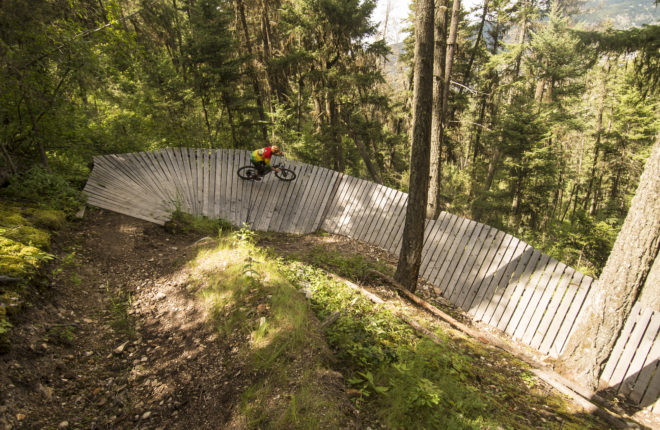
The Xat’sull Heritage Site is a national award-winning heritage village located just 20 minutes north of Williams Lake on a grassy bench above the Fraser River. The Majestic Fraser River runs alongside the Xatśūll (hat-sull) Heritage Village and has played an integral role in the community throughout the years. This unspoiled region is home to a wide array of plants, fish, and wildlife – each perfectly adapted to this unique environment. Here, members of the Secwepemc (shi-huep-muh-k), sometimes known as Shuswap, First Nation, offer storytelling by village elders, educational wilderness walks and salmon lunches. Be sure to contact Xatśūll in advance for reservations.
- You are invited to visit and experience their spiritual, cultural, and traditional way of life and learn more about northern Secwepemc (shi-huep-muh-k) culture.
- Experience a guided tours, which includes spending time visiting with Xat’sull Elders and/or youth who can teach you more about Xatśūll culture through their storytelling which has been passed down from generation to generation.
- If you love mountain biking, the Xatśūll trail network now offers over 30 km/18.6 mi of trails with stunning views of the heritage village and the Fraser River.
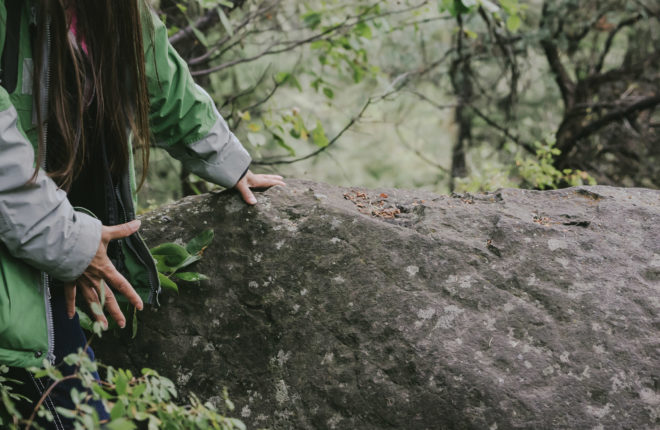
Soda Creek is a small community at the mouth of Soda Creek located just north of Williams Lake. Soda Creek was the terminus of the first sternwheeler steamboat in the upper Fraser River, launched in 1863, named the SS “Enterprise.” As travellers on their way to the goldfields reached the end of the Cariboo Waggon Road, they’d continue on via the steamboat to Quesnel, at least until the road was completed in 1865. The town experienced another boom in 1910 when the Grand Trunk Pacific Railroad arrived from eastern Canada into Fort George, and several steam sternwheeler boats were built to travel the Fraser River. Today Soda Creek is a rural community and home to residents that travel to and from Williams Lake. Visitors can find ample opportunity to enjoy history, culture, and active pursuits
- Stop in at the renowned Soda Creek Sweet Corn, located at the historic Dunlevy Ranch, to u-pick corn and other veggies during the harvest season, which typically begins in mid- August and runs through to early autumn.
- Nearby Xats’ull Heritage Village offers guided tours of a replica of a Secwepemc (shi-huep-muh-k) village that is open during the summer. Contact Xatśūll in advance for reservations.
- If you love mountain biking, the Xatśūll trail network now offers over 30km/18.6 mi of trails with stunning views of the heritage village and the Fraser River.

The small community of McLeese Lake is a family vacation spot along the Cariboo Highway between Williams Lake and Quesnel and was formerly called Mud Lake. It was then renamed in honor of Robert McLeese, a resident of Soda Creek from 1863 until his death in the 1880s. Robert McLeese was a hotel keeper, store owner, postmaster of Soda Creek for 25 years, owner of a sternwheel river boat, and member of the Legislative Assembly.
- Modern-day travellers come to McLeese Lake for outdoor adventures. Water sports and fishing are popular, along with hiking, camping, and off-roading in the surrounding hills.
- In winter, hiking trails become snowmobile and cross-country ski routes while the lake is transformed into an outdoor skating rink and idyllic ice-fishing hot spot.
- McLeese Lake offers gas stations, a cafe, post officer, general store, pub, and a private campground and motel located on the shoreline of McLeese Lake.
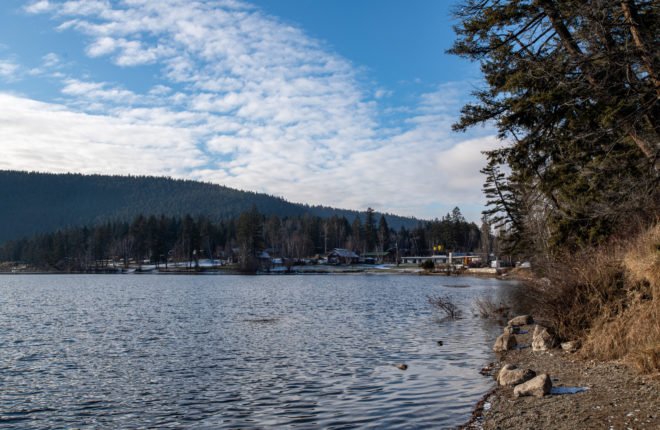
To the northeast of Quesnel, the Blackwater River is the eastern entry point of the Nuxalk-Carrier Grease Trail (Alexander Mackenzie Heritage Trail). Extending 420 km/261 mi westward to the Pacific coast, this historic trail was once the Nuxalk (nu-halk) and Carrier First Nations’ primary trade route. Here in 1793, famed explorer Alexander Mackenzie traced its unmapped terrain to become the first European to reach the Pacific Ocean by land. More than a half century later, during the Cariboo Gold Rush, sternwheelers carried miners and supplies up the Fraser River to Quesnel, landing on the traditional territory of the Lhtako Dene Nation where the Quesnel and Fraser rivers meet. As a result, the community became a major stopping point and supply centre during the gold rush. Today, this landing is called Ceal Tingley Park, named after a Mayor of Quesnel, and is the perfect starting point to the Riverfront Trail where history and heritage sites await you, including the world’s longest wood Howe Truss bridge.
- Quesnel is home to endless wilderness trails stretching from the city centre to outlying areas, you can explore these trails on mountain bike, quad, skis, or your own two feet. Pinnacles Provincial Park offers a 1km hike with panoramic views of Quesnel.
- Stop in at the Quesnel & District Museum and Archives which houses a rare collection of artifacts and celebrates Quesnel’s history with a First Nations Exhibit and imagery. Grab a historical walking tour booklet while you are there and follow in the footsteps of our ancestors and discover the unique history of Quesnel.
- Quesnel is home to plentiful and diverse wildlife. Whether you prefer fly fishing, deep water fishing, hunting, or just observing, you can find it all here. Local guide outfitters are available or rods, reels, augers and tackle boxes can be borrowed free of charge from the Quesnel Visitor Centre.
- You can find many hotels, motels and campgrounds in and around Quesnel that give you a great place to stay while you explore the town and surroundings.
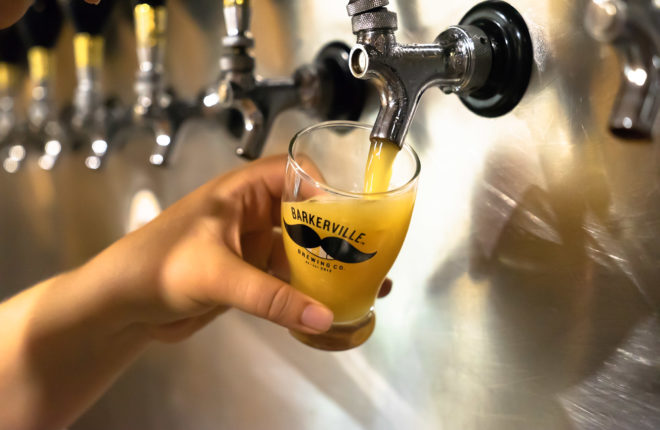
Cottonwood is located in the northern Cariboo Plateau, 8 km/5 mi northwest of Coldspring House, which is at the beginning of the Cottonwood River (at the confluence of the Swift River and Lightning Creek – one of the more renowned creeks during the Cariboo Gold Rush). Located on Highway 26, between Quesnel and Barkerville Historic Town & Park, Cottonwood House Historic Site is one of the last few remaining Cariboo gold rush era roadhouses. It was built in the 1860s to offer accommodation, meals and provisions to miners and travellers on their journey along the Cariboo Waggon Road and became one of the most famous roadhouses, known as a stopping place of high quality. Today, this wheelchair-accessible provincial historic site will allow you to experience firsthand over 75 years of the Boyd family history and the many features this unique heritage site has to offer for those wanting to explore and experience the Gold Rush Trail and its rich history.
- Cottonwood House was a fully functioning farm with horses, chickens, rabbits, and sheep. The site features a variety of original and antique farming equipment for guests to explore and learn about historical farming techniques.
- Tour the many heritage buildings on site, including the Double Barn, built in 1895, and the General Store, originally built as a warehouse in 1888. Other heritage structures include the Gift and Candy Shop, Horse Barn, a Guest House and Root Cellar.
- Enjoy the use of the 3-kilometre wheelchair-accessible trail system. With varying lengths and degrees of accessibility, these trails will allow you to experience all aspects of this 26-acre site.
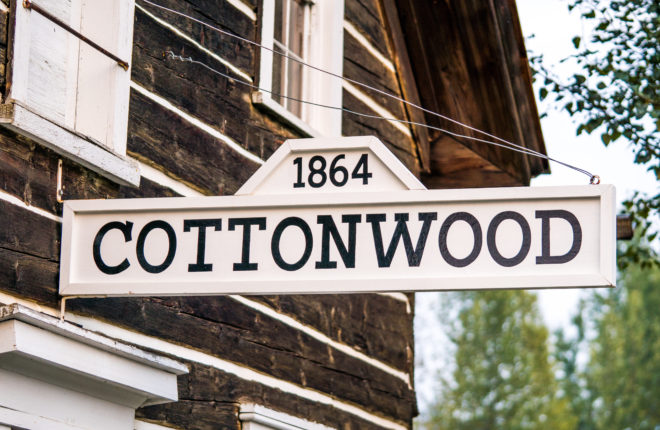
The mountain town of Wells was built as a company town for Fred Wells’ Gold Quartz Mine when the promise of more gold gave many an opportunity to escape the great depression in 1927 with the population reaching over 4000 people in the 1940s. With fewer than 300 year-round residents in Wells today, many of its heritage buildings have been restored, including the Wells Hotel and the Sunset Theatre, where you can enjoy live music, live theatre and concerts all through the summer. Other architectural landmarks sport rainbow colours in a nod to the town’s vibrant arts scene. Wells is a small but diverse town nestled in the mountains and is a centre for artists and outdoors enthusiasts. During all four seasons, outdoor enthusiasts can enjoy the excellent trail systems available for mountain biking, hiking, cross-country skiing, snowmobiling and ATV-ing or head to nearby Troll Mountain for some downhill skiing.
- Island Mountain Arts is a celebrated art school, offering classes in the visual, literary and performing arts. In addition, they host the popular ArtsWells Festival of All Things Art (held the first weekend in August). Also, be sure to check out the Sunset Theatre’s programming and events throughout the year.
- Take a stroll around town and feel the rich past of an authentic gold rush town. Visit shops and galleries like the Frog on the Bog featuring the creative work of local artists and artisans.
- Barkerville is located just 5 km/ 3.1 mi east of Wells, therefore, many travellers combine a trip to Wells with a visit to Barkerville Historic Town & Park. The extraordinary historic town of Barkerville is a living history of BC’s golden beginnings.
- The beautiful Bowron Lake chain is only a short distance from Wells and offers fantastic opportunities for people to kayak, canoe and camp. There is a Provincial Park, as well as other places to stay, like the Bowron Lake Lodge or you can find canoe rentals at Bowron Lake Canoe Rentals.
- During the winter, dog sledding and skijoring is very popular in Wells and attracts people from across the world to take in the famous Gold Rush Trail Sled Dog Mail Run. Join the locals and head out with snowshoes or skis.
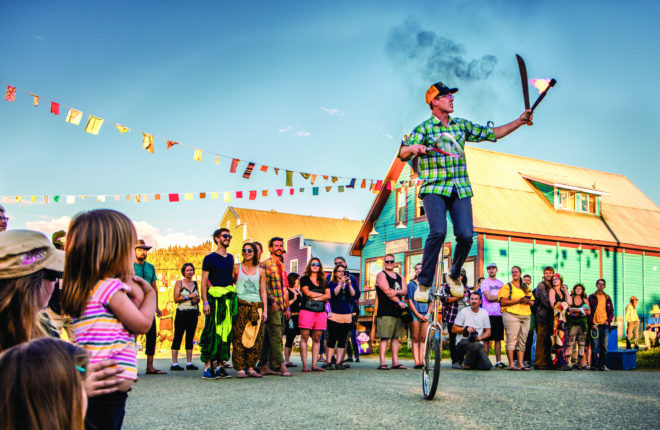
You have reached the El Dorado of the gold rush, where on August 17, 1862 Billy Barker’s legendary gold strike on Williams Creek triggered a multi-billion-dollar industrial revolution that literally built and shaped British Columbia. Gold fever spread like an epidemic when news of the strike filtered out, bringing fortune seekers from around the world into the remote wilderness. Now a Canadian National Historic Site, Barkerville Historic Town & Park is British Columbia’s best known heritage destination and the largest living-history museum in western North America, where exciting seasonal events and fun-filled daily activities await. Barkerville is located in the shared territory of seven Indigenous Nations and includes 125 restored buildings on display with knowledgeable historic interpreters guiding you through Barkerville’s rich history through storytelling, activities, interactive lessons, theatrical performances, gold panning, stagecoach rides and more! It definitely takes more than one day to get the full experience at Barkerville. Be sure to check out their website for all the exciting programming, seasonal events and special programming.
- Absorb an in-depth understanding of the gold rush history, Barkerville, and the colourful characters of years past by attending one of the enlightening and entertaining town tours, hosted by Barkerville’s historical interpreters. The tour is highly recommended for first-time visitors.
- Take in daily programming that shares the diverse gold rush stories and history from multiple perspectives. From the Confederation Rally, an authentic classroom session, cemetery tour, courthouse trials, Chinese cultural sessions, indigenous storytelling, blacksmith and printing press demonstrations, shows at the Theatre Royal, mining and waterwheel presentations you will leave enriched from all of the authentic and diverse programming Barkerville offers.
- Participate in an Indigenous Cultural session and learn more about the indigenous stories and history in the area.
- Enjoy a fascinating tour of one of Canada’s oldest Chinatowns where you can learn about the life of Chinese miners and merchants in Barkerville and how their culture was maintained and adapted to the rugged land of the Cariboo.
- Stay in one of Barkerville’s cozy year-round accommodations that will take you back in time to the hey-day of the Cariboo Gold Rush.
- In the winter, experience a host of fun, family-friendly events, including an Olde-Fashioned Christmas or take in the historic Gold Rush Trail Sled Dog Mail Run.
